Baking with applesauce is a great way to reduce calories by eliminating oil from your baked goods. But what if you don’t have applesauce when a recipe calls for it? No problem! I’ve got you covered with these 10 easy applesauce substitutes for baking.
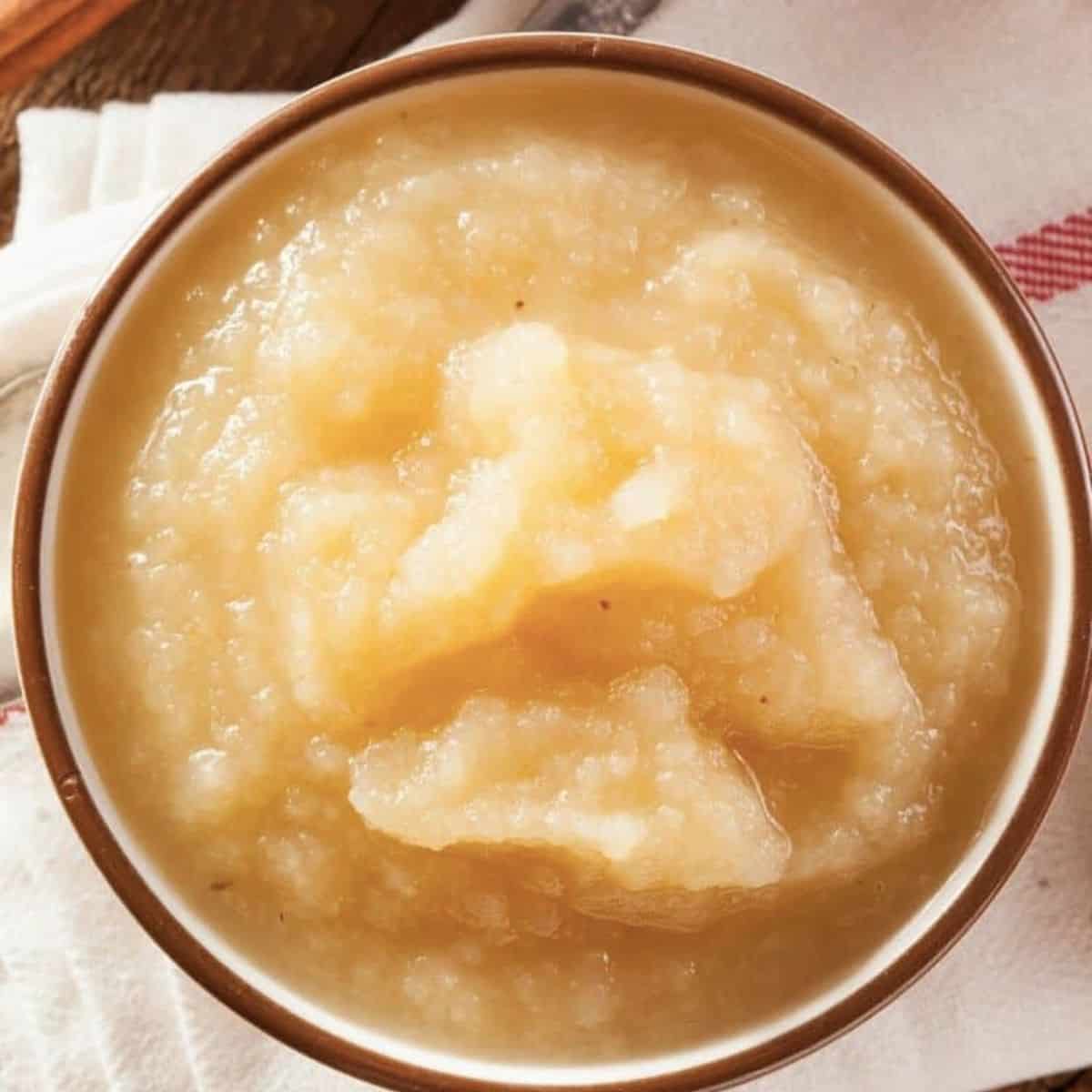
Applesauce comes in many different varieties nowadays. You can buy it at the store in a large container, individual snack cups, and even pouches that come in various flavors. My kids love the fruit-flavored apple squeezes!
Applesauce is not only a simple and healthy snack, but it’s also a great substitute in baking recipes. It works in baked goods in several different ways.
- A healthier substitute for oil.
- A vegan substitute for eggs.
- A refined sugar-free sweetener.
Applesauce as a substitute for oil provides moisture. As a substitute for eggs, it acts as a binder for the wet and dry ingredients. When added as a flavor enhancer it provides natural sweetness. It can be used to substitute for vegetable oil in brownies.
So, if applesauce is already used as a substitute in baking recipes, what can you substitute for applesauce if you don’t have any?
The answer depends on what the applesauce is used for in your recipe. Is it used for added moisture as a substitute for fat? How about binding the wet and dry ingredients? Or is it added for natural sweetness?
In this post, I provide you with 10 applesauce substitutes and go into the pros and cons of using each one, as well as the type of baking recipe for each substitute that works best.
Jump to:
- What is Applesauce?
- How to Make Homemade Applesauce
- Why is Applesauce Used in Baking Recipes?
- What Are the Best Applesauce Substitutes for Baking?
- What Are the Best Healthy Applesauce Substitutes?
- Other Applesauce Substitutes
- 1. Pureed Apples
- 2. Mashed Banana
- 3. Mashed Sweet Potato
- 4. Pureed Pumpkin
- 5. Mashed Avocado
- 6. Yogurt
- 7. Silken Tofu
- 8. Coconut Milk
- 9. Butter
- 10. Vegetable Oils
- Frequently Asked Questions
- More Helpful Cooking Tips!
What is Applesauce?
Applesauce is a condiment or snack made from cooked apples. It is common in the United States to find applesauce on grocery store shelves, but I have found that many readers from the United Kingdom have asked me for applesauce substitutes for my baking recipes. This is because applesauce is not regularly sold there. While it’s quite simple to make sugar-free applesauce, having some simple substitutes at hand is even easier!
How to Make Homemade Applesauce
Applesauce is made from simple ingredients including apples, and water. Sometimes there is added sugar or cinnamon. The apples are cooked down with water until soft, then mashed into a smooth puree.
Homemade Applesauce Ingredients
- 8 apples
- ½ cup of water
- ¼ teaspoon cinnamon
Homemade Applesauce Instructions
Applesauce can be made on the stovetop, in a slow cooker, or in an instant pot For all of the cooking methods, start by peeling and coring the apples, and then cut the apples into small chunks.
Combine the apples with water and a touch of cinnamon in either a large pot on the stove, a slow cooker, or a pressure cooker. Cooking time will depend on the method you use.
Stovetop Method-Bring the apples and water to a boil. Then cover and allow to simmer for 25-30 minutes.
Slow Cooker Method-Cook on high for 4 hours.
Instant Pot Method-Cook on manual for 8 minutes, then allow the pressure to naturally release.
Why is Applesauce Used in Baking Recipes?
There are two main reasons that applesauce is used in baking recipes.
#1 Replacement for Oil or Eggs: Many vegan baking recipes call for applesauce because it helps adds moisture as a fat substitute and binds the ingredients together.
#2 Flavor: Applesauce can also add flavor to your baked goods. Especially if it’s a recipe that focuses on apples. But it can also be used in other types of baked goods recipes to enhance the flavor or provide natural sweetness.
What Are the Best Applesauce Substitutes for Baking?
Applesauce has become a popular substitute for butter and oil in baking recipes, but also adds flavor and natural sweetness. Depending on the purpose of applesauce in your recipe there are substitutes that work better for flavor versus moisture and binding.
What Are the Best Healthy Applesauce Substitutes?
The best substitutes for flavor are any fruit purees including pureed apples, mashed bananas, berry puree, pureed pears, mashed sweet potatoes, and pureed pumpkin. When applesauce is used in a recipe for added moisture and binding, the best substitute options include silken tofu, avocado puree, or vegan or Greek yogurt.
Many recipes that call for applesauce do so as a substitute for oil and/or eggs. It is used to reduce the overall fat and calories in a baking recipe, or to make it vegan-friendly. Here is a full list of no-oil substitutes. These substitutes can be added to your baking recipe at a 1:1 ratio.
- Purred Apples
- Mashed Banana
- Mashed Sweet Potato
- Pureed Pumpkin
- Mashed Avocado
- Yogurt
- Silken Tofu
- Coconut Milk
Other Applesauce Substitutes
While most recipes that call for applesauce do so to avoid oil and high-fat products, you can always substitute it for a neutral flavored oil, or butter. Here are some suggestions for neutral-flavored oils and butter.
- Melted Butter (both regular or vegan)
- Vegetable Oil
- Canola Oil
- Coconut Oil
- Avocado Oil
1. Pureed Apples
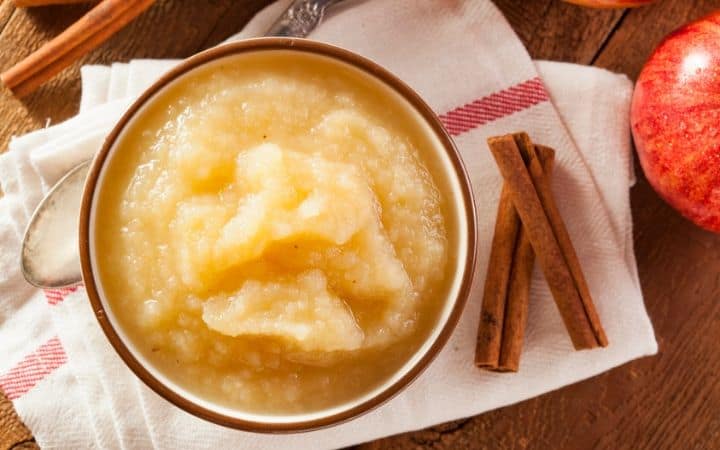
Applesauce and pureed apples are quite similar. What’s the difference? Instead of cooking the apples down with water, place them in your blender or food processor with a bit of water and blend until smooth.
Ratio: Use a 1:1 ratio.
Pros: It’s the most similar to applesauce. Since it’s only made with apples and water it has all-natural ingredients.
Cons: It doesn’t have the same texture as homemade or store-bought applesauce. It will be grainy. You will also need to have a high-speed blender or a food processor. If you don’t have either of these kitchen tools, then you won’t be able to whip it up quickly.
How to Use: Peel and core 2-3 apples, then cut them into small chunks. Place them in your blender or food processor with 2 tablespoons of water. Blend until smooth.
Tools Needed: Food processor or high-speed blender, apple corer, vegetable peeler.
2. Mashed Banana
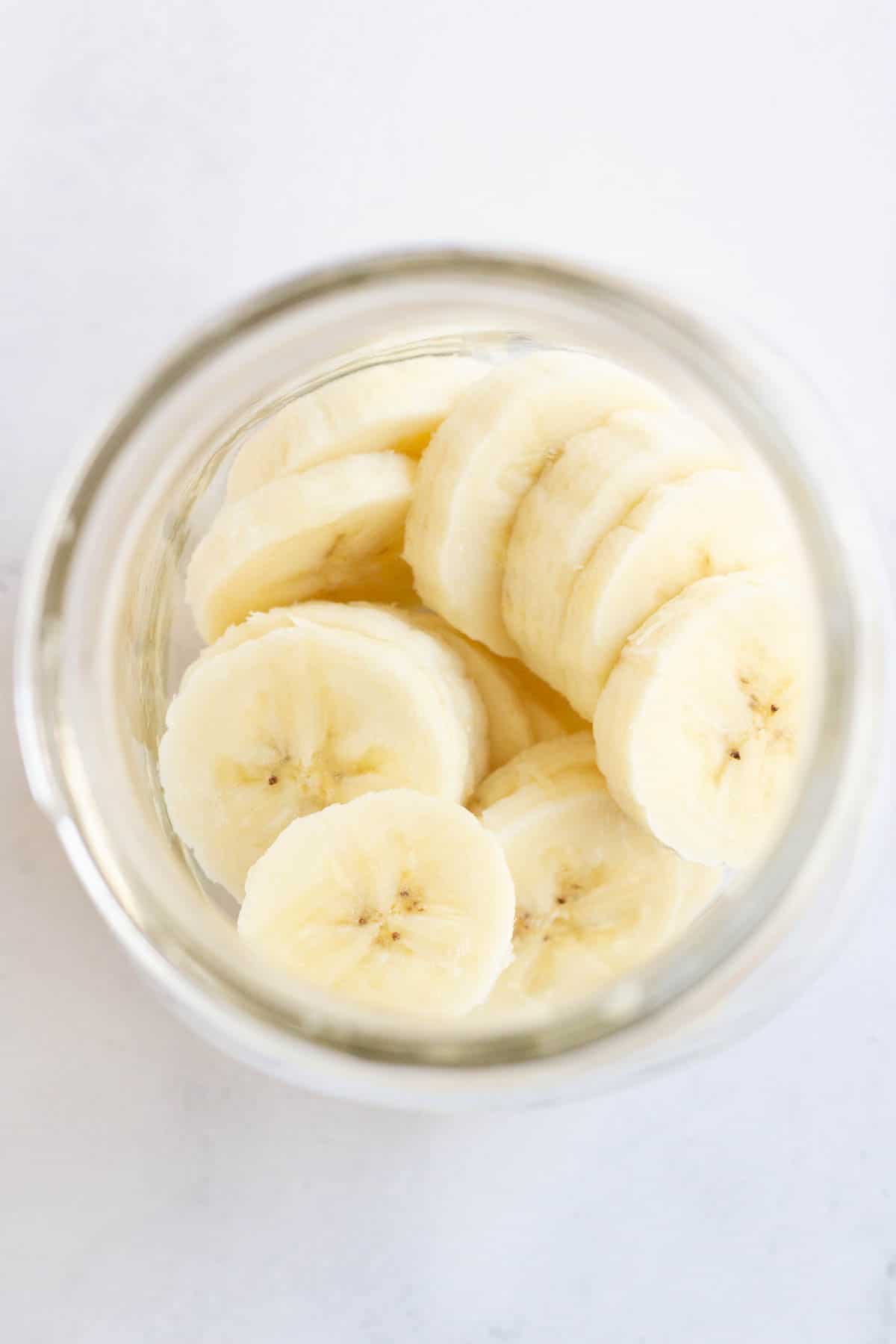
Mashed banana works well in baking recipes because it works as a natural sweetener, adds moisture, and binds the wet and dry ingredients together.
Ratio: Use a 1:1 ratio or 1 banana for each ½ cup of applesauce.
Pros: Bananas are easy to prepare. They have a similar nutrient profile and work well in most baking recipes.
Cons: Bananas have a rather distinct flavor, so your baked goods may have a noticeable undertone of banana flavor. They also cook more quickly than applesauce, so you may need to slightly adjust your baking time to ensure that it doesn’t burn.
How to Use: For every ½ cup of applesauce, you’ll need to use one mashed banana. Or to be even more specific, mash your banana first, then measure the mashed banana and use a 1:1 ratio. For the best results, add your bananas to a food processor and blend until smooth. This method will ensure you don’t have any chunks of banana, then measure the amount of liquified banana you need for a 1:1 ratio. If you don’t have a food processor you can use a fork or a potato masher. Bananas work well in muffins and cakes.
Tools Needed: Food processor, fork, or potato masher.
3. Mashed Sweet Potato
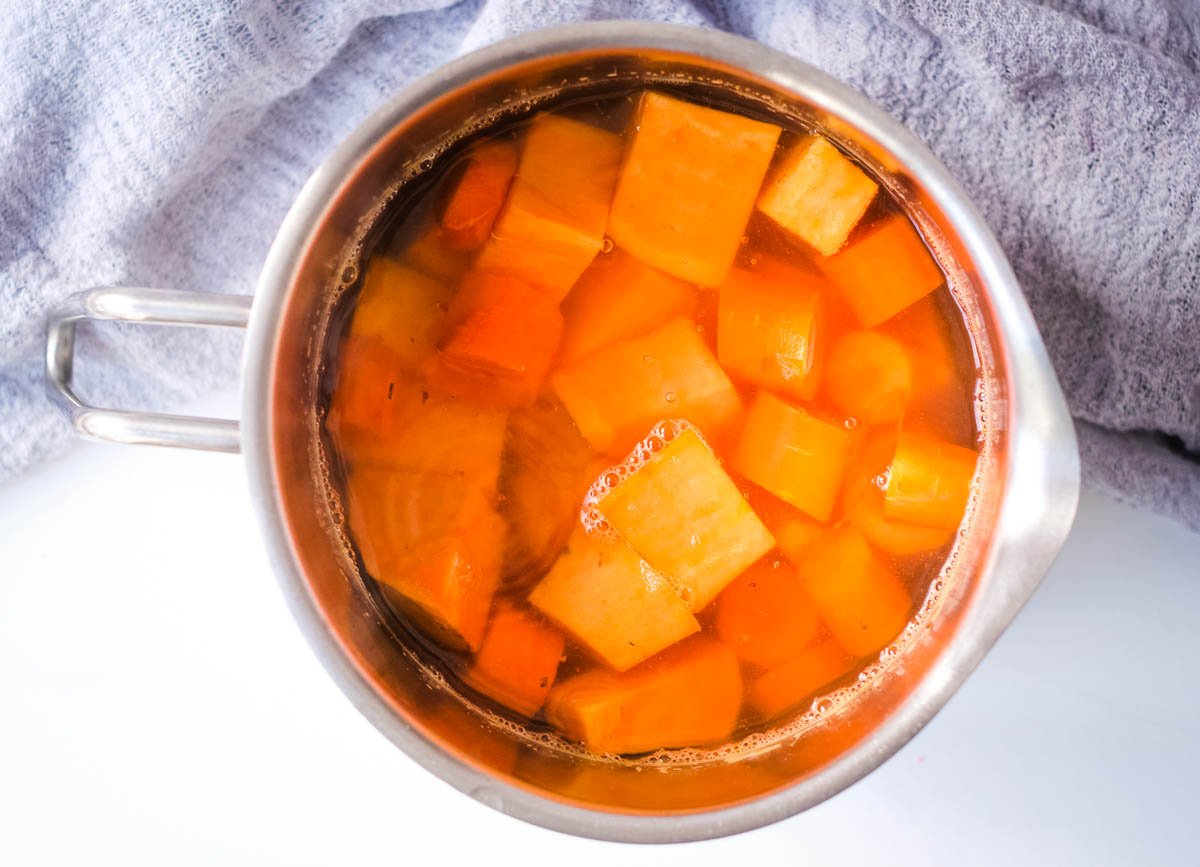
Ratio: Use a 1:1 ratio.
Pros: Vegetable purees such as sweet potatoes are not overwhelmingly sweet, but do have a hint of sweetness that is similar in intensity to apples. Like apples, they are a good source of fiber. They are generally low in calories, and nutrient-dense, making them a healthy alternative.
Cons: You cannot use raw sweet potatoes. For this alternative, you need to bake or boil the sweet potatoes so that they can be mashed into a puree. This takes a bit of extra time.
How to Use: Wash and peel your sweet potatoes. Cut into 1-inch chunks, and place in boiling water. Reduce the heat and simmer for 12-15 minutes, or until the sweet potatoes are fork tender. Drain, and mash with a fork or potato masher.
Tools Needed: Fork or potato masher, vegetable peeler, medium pot.
4. Pureed Pumpkin
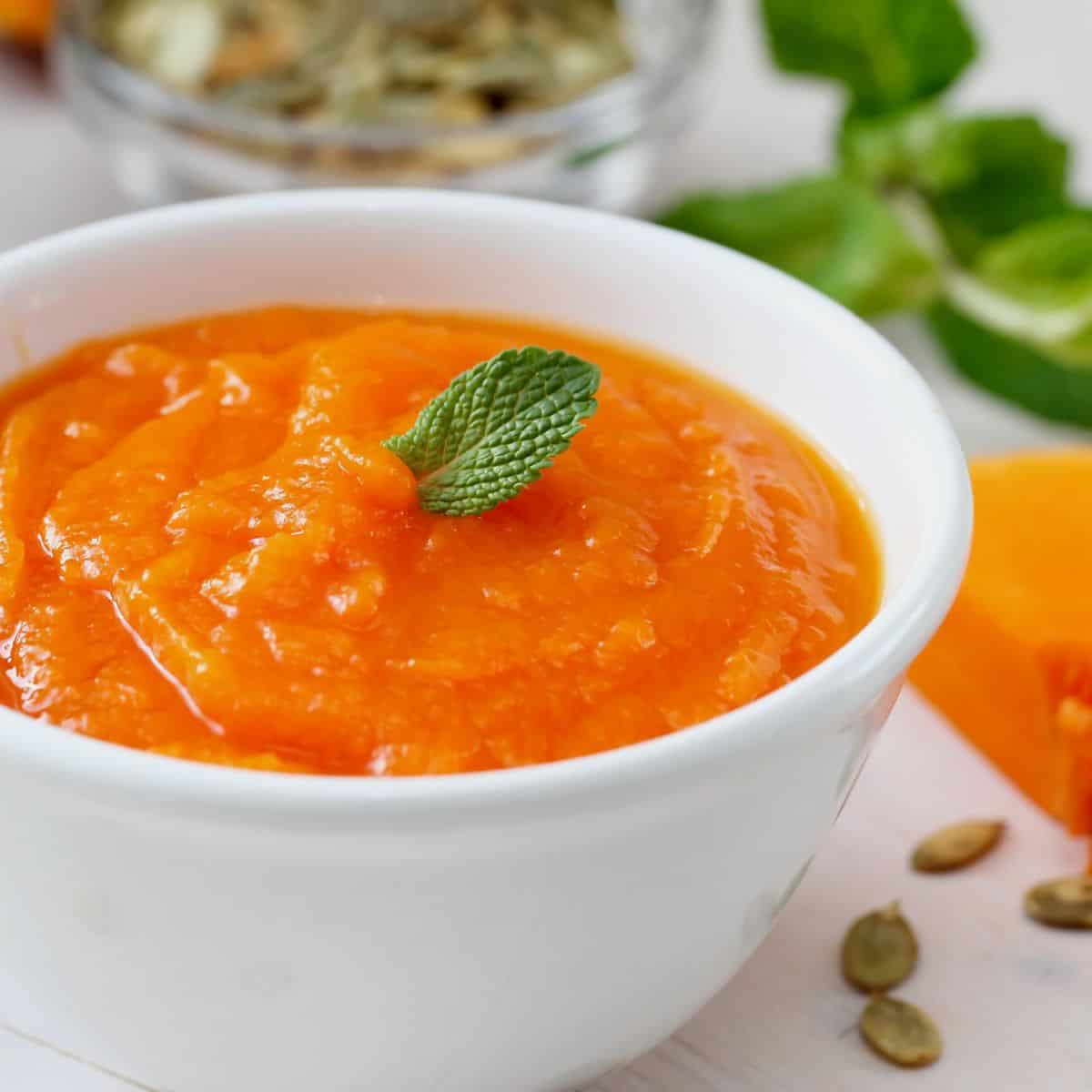
Similar to mashed sweet potato, pumpkin puree is mild in flavor, is high in fiber, and nutrient dense. It does not add natural sweetness, but it does help to add moisture and bind ingredients together.
Ratio: Use a 1:1 ratio.
Pros: Pumpkin puree has a similar texture to applesauce. This means that your baked goods will have a similar texture as well. It’s easier to get your hands on canned pumpkin puree. If you have an extra can of pumpkin hanging around from Thanksgiving, you can put it to good use. Canned pumpkin puree has a long shelf life.
Cons: Pumpkin is not going to add natural sweetness. It also takes longer to cook than applesauce so you may need to adjust the timing of your bakes.
How to Use: Use either canned or homemade pumpkin puree. Measure the amount needed, and add to your recipe at the time it calls for the applesauce. Adjust the baking time as pumpkin takes longer to cook than applesauce. Check your baked goods at the time indicated on the recipe, if it’s not fully baked add a few extra minutes.
Tools Needed: A can opener.
5. Mashed Avocado
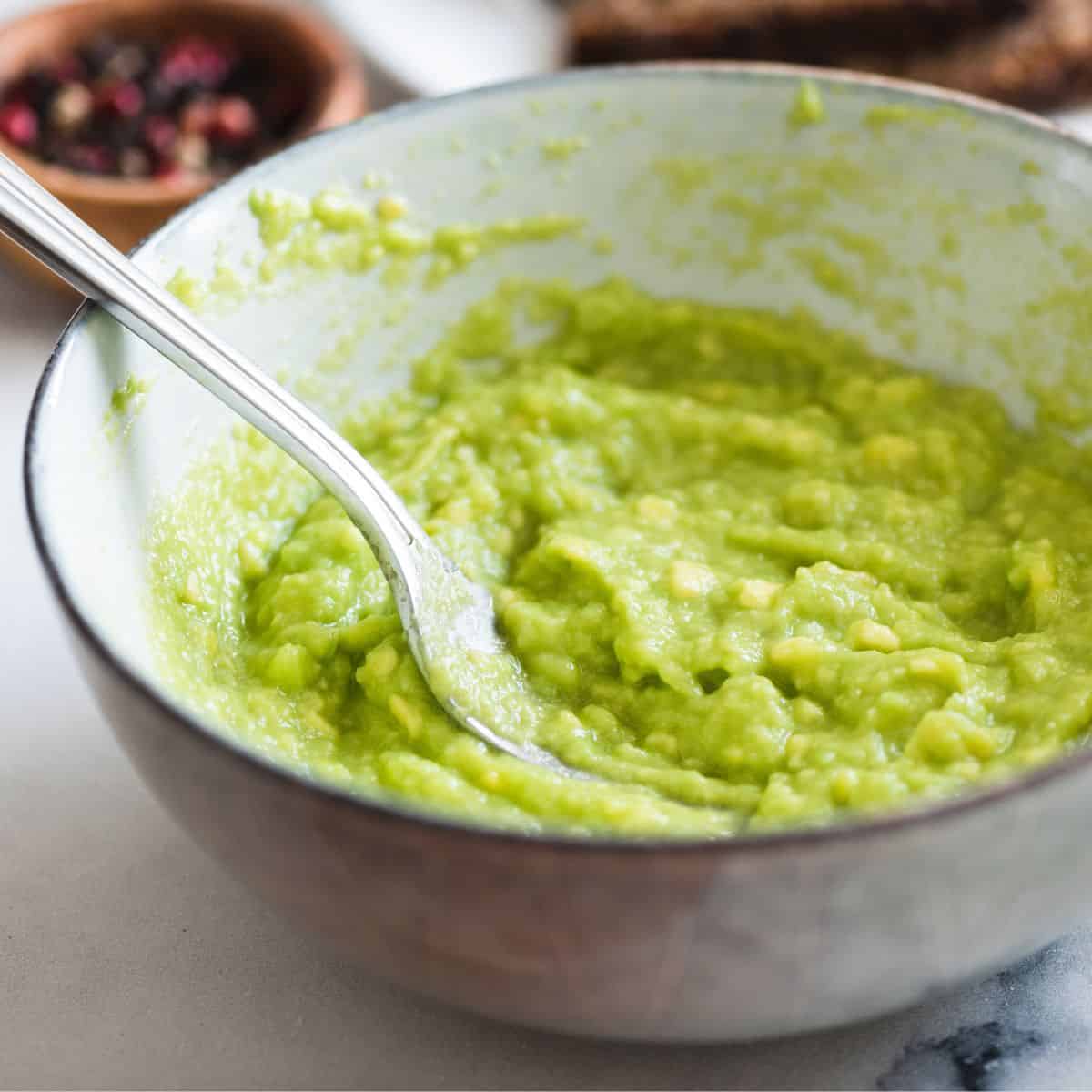
Use mashed avocado for added fat and moisture in a recipe. It is a good substitute when applesauce is used as a substitute for butter.
Ratio: Use a 1:1 ratio.
Pros: Avocado adds richness to your baked goods and has a neutral flavor. It’s a simple substitute. All you need to do is mash the avocado, or place it in a food processor to get a creamy texture.
Cons: Avocado is denser than applesauce so it can add some weight and heftiness to your baked recipes.
How to Use: Avocado works best in rich bakes such as chocolate flourless cakes, or chocolate muffins. For best results, place your avocado in a food processor to get a smooth texture.
Tools Needed: Food processor or fork for mashing.
6. Yogurt
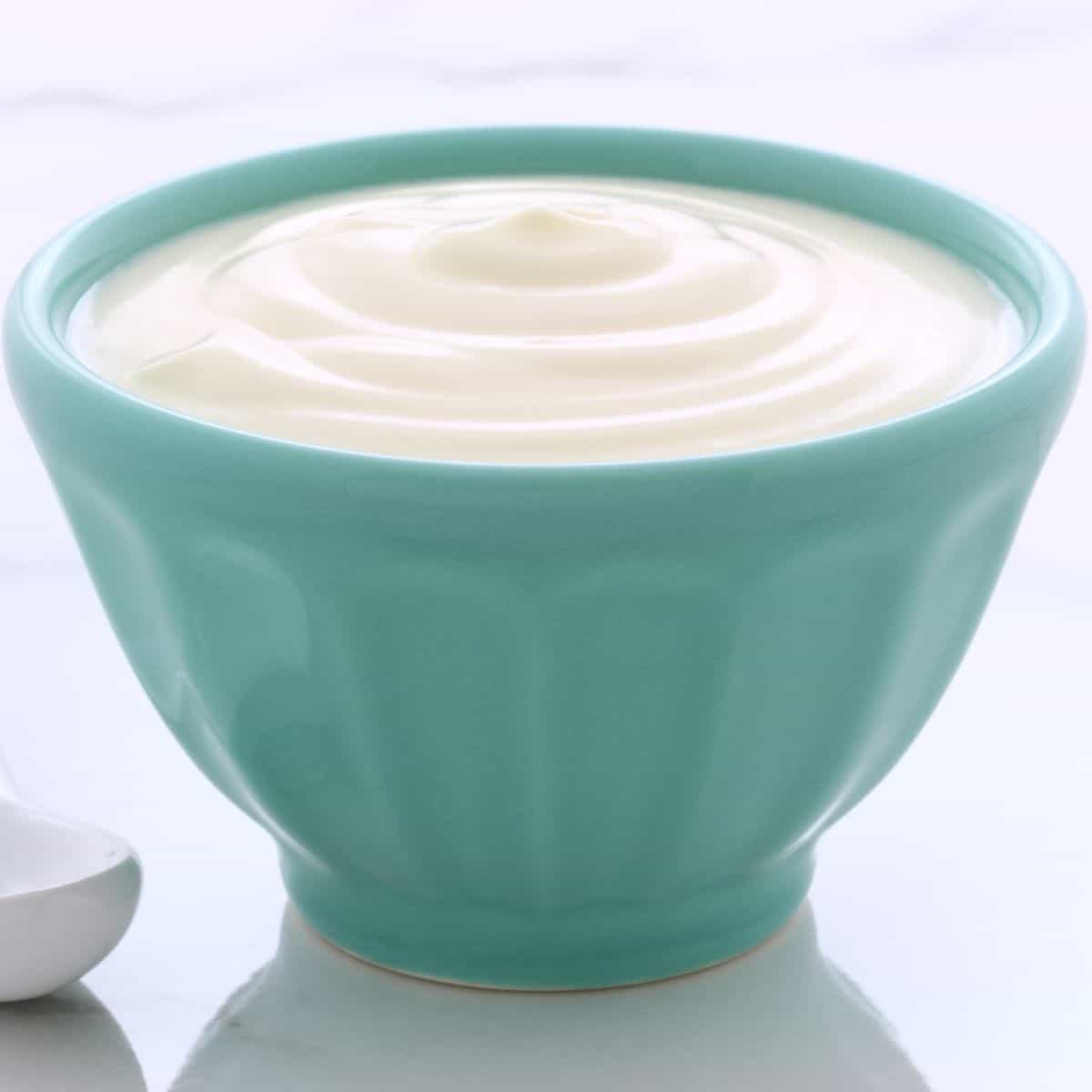
Similar to avocado, yogurt is a good option as a fat substitute, especially plain Greek yogurt which is high in fat and high in protein.
Ratio: Use a 1:1 ratio.
Pros: A good source of fat, which helps your baked goods bake up moist. It’s a healthier source of fat than oil or butter, as well as a good source of protein which makes your baked goods more satiating.
Cons: Since yogurt is higher in fat and protein it can lead to your baked goods coming out dense. Depending on the recipe, you may need to reduce the amount of milk added (if the recipe calls for it) as yogurt leads to a wetter batter. Plain yogurt doesn’t have any added sweetness. Instead, it adds a bit of tang, so you may need to adjust the sugar levels to balance out the flavors.
How to Use: Yogurt is best used for baked goods that aren’t supposed to be as sweet, such as biscuits, scones, or cornbread. Other dairy products can also be used, but the texture of yogurt and the fat content of yogurt works the best.
Tools Needed: Measuring cup.
7. Silken Tofu
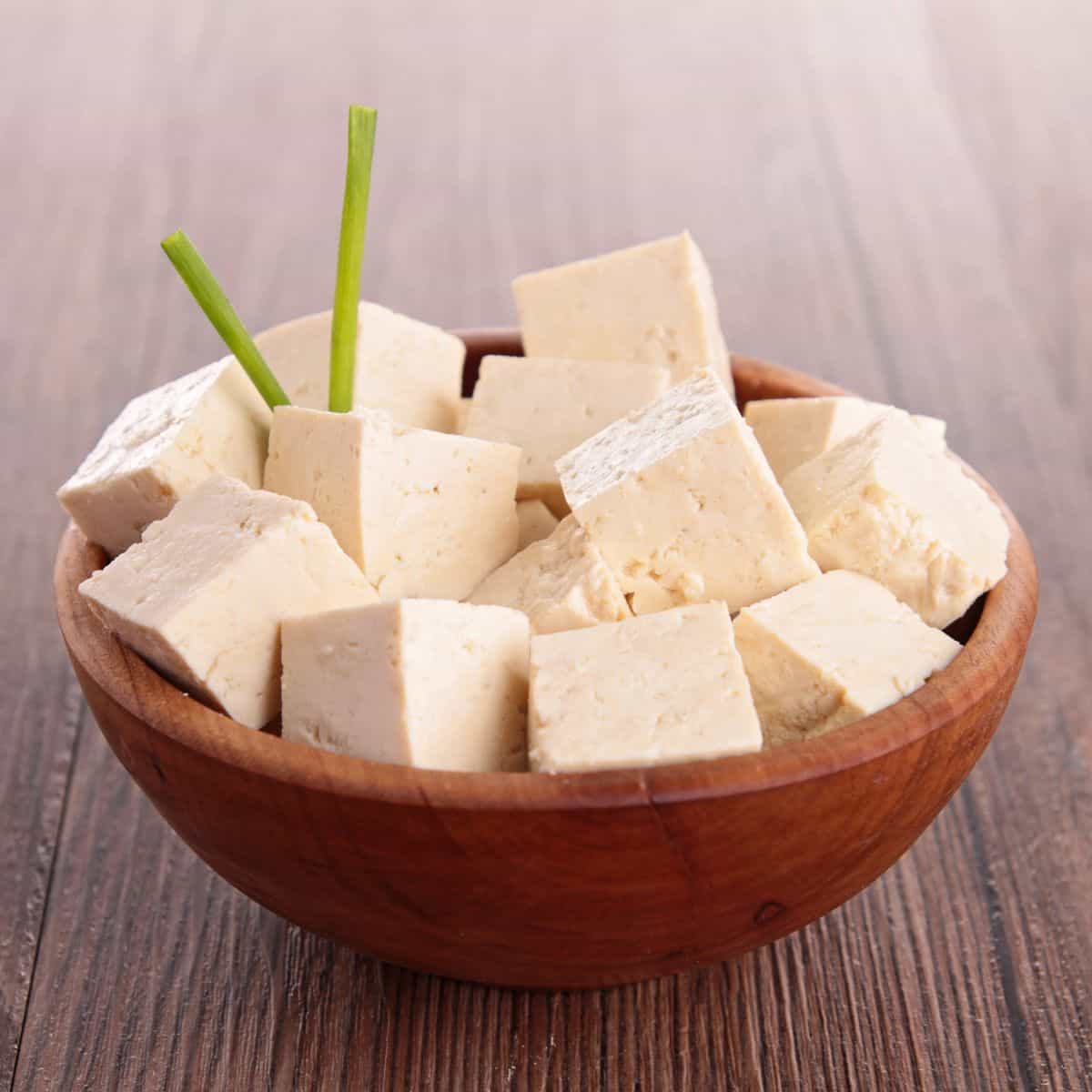
Silken tofu is a type of tofu that has a lighter and creamier texture. It is used to make vegan-friendly desserts, high-protein smoothies, and ice creams. But it also works as a baking substitute.
Ratio: Use in a 1:1 ratio.
Pros: This is a vegan-friendly option that works well as a fat and binding substitute in baked goods. When blended together it has a similar consistency to applesauce.
Cons: Silken tofu is not sweet, so it does not add flavor to your baked goods which can be a pro or con depending on your recipe. It’s best to use it in recipes that have strong flavors like chocolate.
How to Use: Silken tofu works best in recipes where it is a substitute for butter or oil. When using it as a substitute for applesauce use a 1:1 ratio. If using silken tofu as a substitute for butter or oil reduce the ratio a bit to ⅓ cup of silken tofu to ½ cup of butter or oil. Silken tofu is denser than melted butter and oil, hence the ratio change.
Tools Needed: Food processor or blender to blend the silken tofu.
8. Coconut Milk
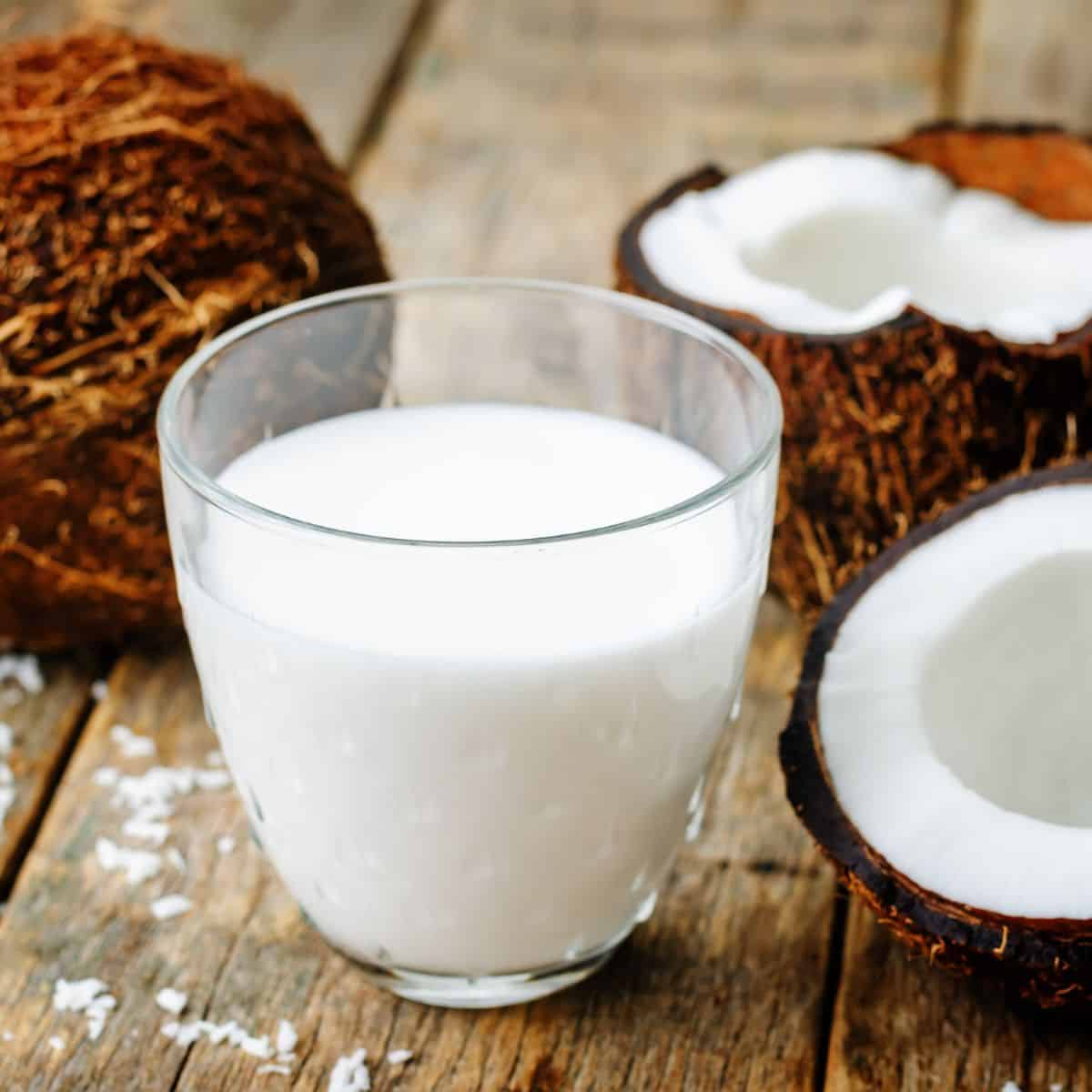
Coconut milk is thicker than regular milk which makes it a better substitute. It’s also higher in fat, which is why it works well as a substitute for fat in baking recipes.
Ratio: Use a 1:1 ratio.
Pros: Coconut milk works as an excellent vegan option. It is high in fat so it adds moisture to your baked goods.
Cons: Coconut has a distinct flavor. It adds a hint of coconut flavor to your recipes. It is not sweetened so you may need to adjust the sweetness of your baked goods.
How to Use: Be sure to use canned coconut milk, not the kind that comes in a container for drinking. Canned coconut milk is thicker and higher in fat, while the carton kind adds water that is not conducive to baking. You can also use canned coconut cream if you cannot find coconut milk.
Tools Needed: Can opener and measuring cup.
9. Butter
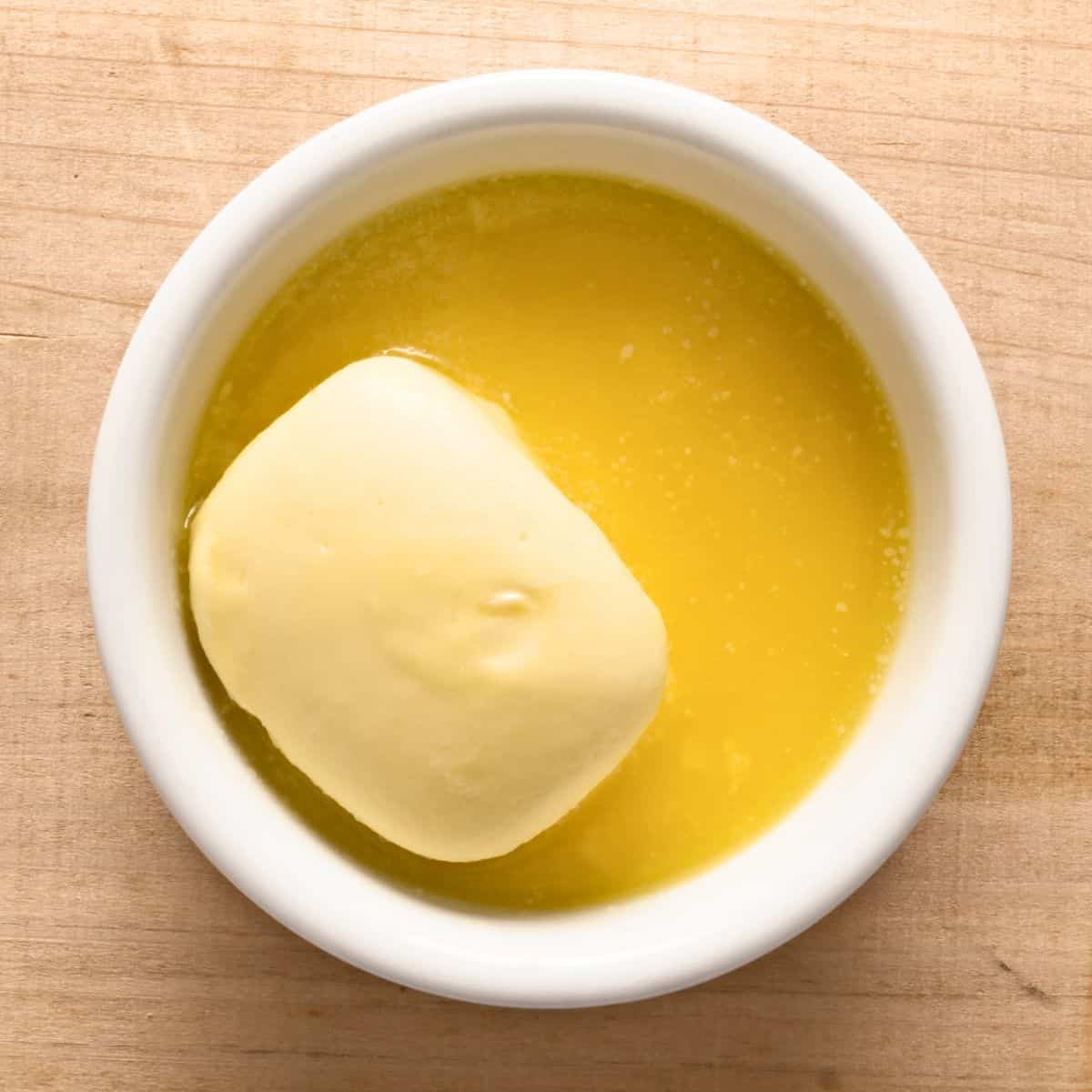
Butter works well in cake and cookie recipes. It is rich, and dense, and adds fat to your baked goods. Often, applesauce is a low-fat substitute for butter, therefore butter works as a high-fat substitute for applesauce.
Ratio: Use a 1:1 ratio.
Pros: Using butter will give your baked goods a rich and buttery traditional flavor. It’s easily accessible and simple to use.
Cons: It is high in fat, and it’s not vegan-friendly unless you use vegan butter. However, butter does not provide any nutritional value.
How to Use: Use in cakes, cookies, muffins, scones, brownies, bars, and more.
Tools Needed: Measuring cups.
10. Vegetable Oils
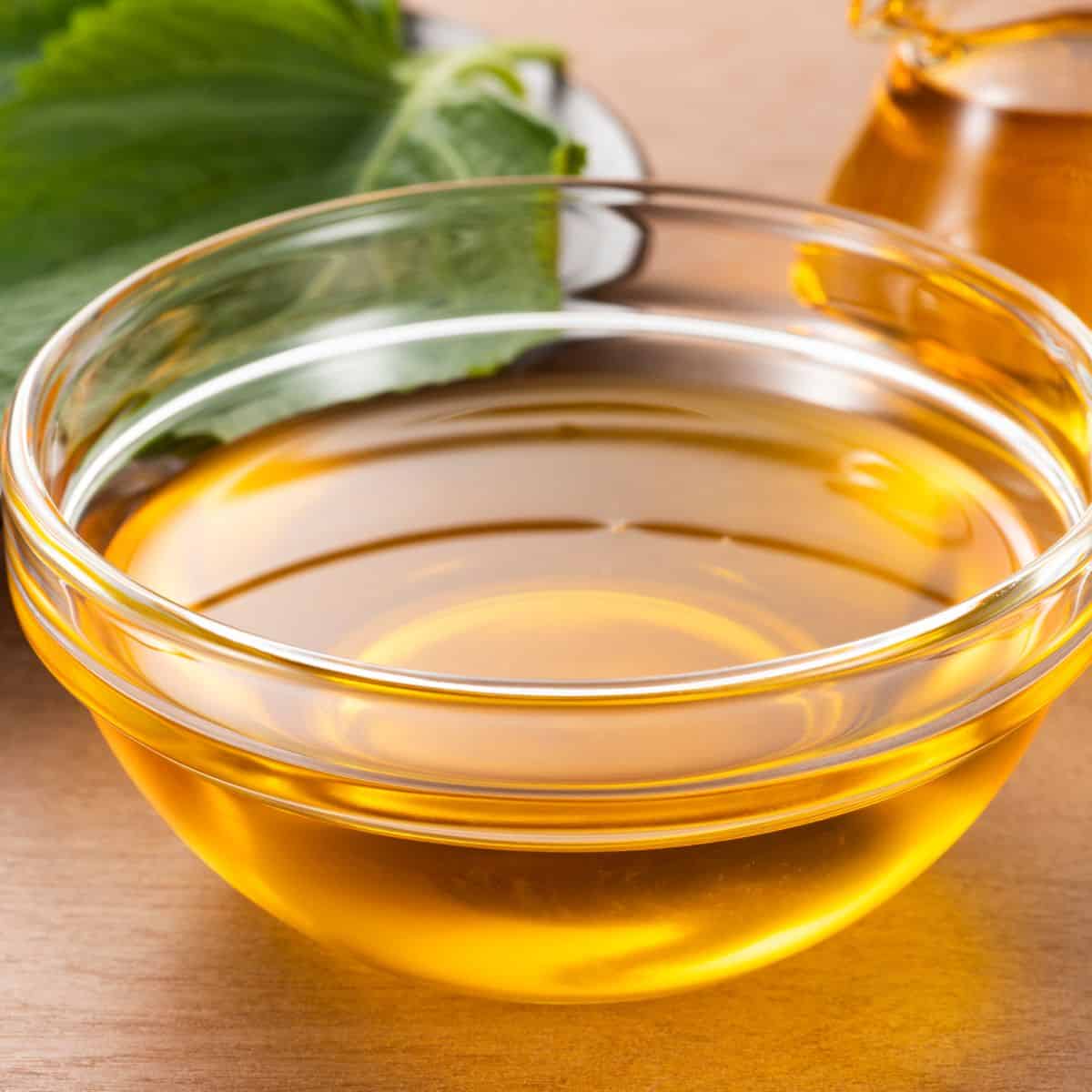
There are a wide variety of different vegetable oils you can use including canola oil, vegetable oil, avocado oil, and coconut oil. It’s best to choose an oil that has a neutral flavor so that it doesn’t alter the flavor of your bake.
Ratio: Use a 1:1 ratio.
Pros: Vegetable oil is easy to use and easily accessible. There are many different oils to choose from, so you surely should have one in your pantry that will come to your rescue. It adds moisture and fat to your baked goods without masking the other flavors.
Cons: Applesauce is used as a substitute for oil to reduce the overall fat and calories, so using oil adds more fat to your recipe without adding any nutritional value.
How to Use: Add the oil of your choice to your recipe when it calls for applesauce. No preparation is needed.
Tools Needed: Measuring cups.
Frequently Asked Questions
Yes, you can substitute bananas for applesauce. Be sure to mash them up so that they are smooth and creamy. You can do this with a fork, or place them in a blender for a liquified consistency. You can sub-mashed banana with applesauce at a 1:1 ratio.
Yes, you can substitute many different types of cooking oils in place of applesauce. Often applesauce is a substitute for oil, so it only makes sense that oil can also be a substitute for applesauce if the baking recipe uses applesauce as a way to add moisture and help to bind the ingredients. If the applesauce is added for natural sweetness, then oil does not make for a good substitute. The best oil substitutes for applesauce include vegetable oil, canola oil, melted coconut oil, avocado oil, or any other neutral-flavored oil.
I do not recommend using milk as a replacement for applesauce. Milk is not as thick as applesauce, so instead of milk, opt for yogurt either Greek yogurt, regular yogurt, or vegan yogurt. Use plain non-flavored yogurt without added sugar. Another option is to use buttermilk. Buttermilk is thicker than regular milk. It gives baked goods a nice tang.
Like oil, butter acts to provide moisture and binding to your baked goods. Butter can be used as a substitute for applesauce in the same way you would use oil in a 1:1 ratio.
You cannot use apples in the raw as a substitute for applesauce. Raw apples add flavor and texture, but they do not help to add moisture and bind the ingredients of your baked goods. You can always add apples for extra flavor, but you would need an additional substitute for the applesauce such as another form of pureed fruit.
The applesauce to egg ratio is ¼ cup for each egg.
More Helpful Cooking Tips!
Please comment below if you found this article helpful or have any additional questions. You can also follow me on Instagram, Pinterest, and Facebook for more family-friendly vegan recipes!


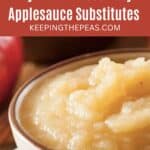
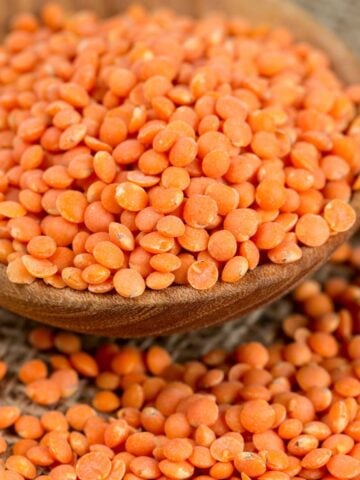
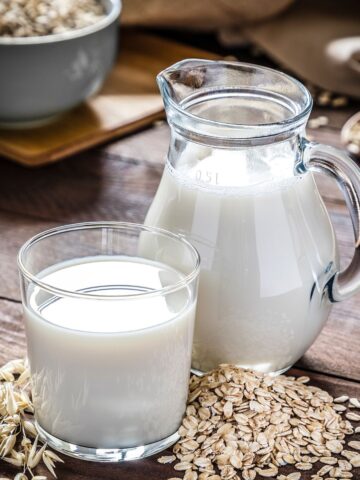
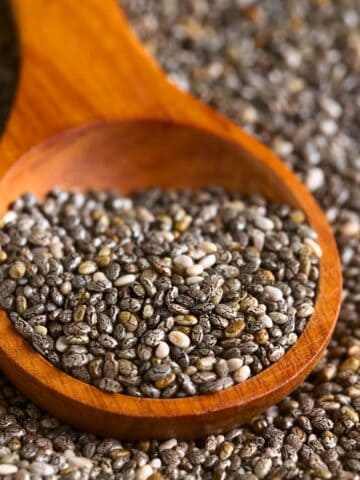
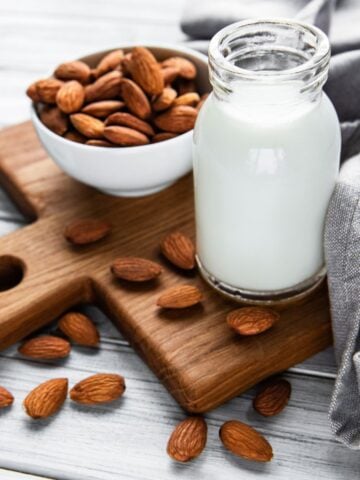
Leave a Reply